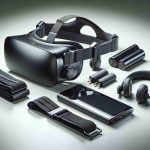Neuralink, the brainchild of Elon Musk, is making significant strides in the field of brain-computer interfaces (BCIs). In a recent announcement, Musk revealed that the company has successfully implanted its “Link” brain interfacing chip into a second clinical trial participant. This news comes after the successful implantation of the chip in the first participant, Noland Arbaugh.
The second participant, known only as Alex, underwent the procedure at the Barrow Neurological Institute in Phoenix, Arizona. Just like Arbaugh, Alex experienced remarkable results from the Neuralink chip. Within minutes of connecting the Link to his computer, Alex was able to control a cursor using his mind. In just a few hours, he surpassed previous records for speed and accuracy with assistive technology.
The impact of the Link on Alex’s life is profound. Prior to receiving the chip, he used an assistive device called the Quadstick to play games. However, the controller had limitations, as he could only move or aim at any given time. With the Link and the Quadstick working together, Alex can now move and aim simultaneously, enhancing his gaming experience.
The success story doesn’t end there. On the second day of testing, Alex used CAD software to design a custom mount for his Neuralink charger, which was then 3D printed and integrated into his setup. This showcases the versatility and potential applications of the Link technology.
Despite these promising developments, it is important to address concerns raised by critics. Ryan Merkley, director of research advocacy for the Physicians Committee for Responsible Medicine, expressed concerns about the safety of Neuralink’s device. Furthermore, reports stated that some animals used in early testing experienced extreme suffering. However, with the positive outcomes seen in human trials, Neuralink is taking steps to address these concerns and ensure the safety and efficacy of its technology.
Neuralink’s Link chip holds great potential for individuals with disabilities, offering them new possibilities for enhanced control and interaction with technology. As the clinical trials continue and more participants are involved, the future of brain-computer interfaces looks promising.
Additional relevant facts:
1. The Neuralink Link chip is designed to be implanted in the brain and interface with computer systems, allowing individuals to control devices using their minds.
2. Elon Musk has stated that the ultimate goal of Neuralink is to create a symbiotic relationship between humans and artificial intelligence.
3. The first human trial participant, Noland Arbaugh, had the Neuralink chip implanted in 2020 and experienced improved control over a computer cursor.
4. The Link chip uses a scalable architecture, meaning that multiple chips can be implanted in the brain to increase the range of functions and capabilities.
5. Neuralink has plans to conduct more clinical trials in the future to gather additional data and refine the technology.
6. The Link chip is designed to be wireless, with a small wearable device that communicates with the implanted chip.
7. The potential applications of Neuralink’s technology extend beyond assistive devices, including potential implications for treating neurological disorders or even enhancing human cognition.
Key questions and answers associated with the topic:
1. What is Neuralink’s Link chip?
– Neuralink’s Link chip is a brain-computer interface device that is implanted in the brain to allow individuals to control computer systems using their thoughts.
2. How does the Link chip work?
– The Link chip uses electrodes to detect neural activity in the brain, which is then translated into computer commands. It allows the user to control devices using their mind.
3. What are the advantages of the Link chip?
– The Link chip offers the potential for improved control and interaction with technology for individuals with disabilities. It can enhance their quality of life and provide new opportunities for communication and independence.
4. What are the challenges or controversies associated with Neuralink’s technology?
– One challenge is ensuring the safety and long-term effects of the implantation procedure and the use of the chip. Additionally, there are concerns about the ethical implications and potential misuse of brain-computer interfaces.
Advantages of Neuralink’s technology:
– Enhanced control and interaction with technology for individuals with disabilities.
– Potential applications for treating neurological disorders or enhancing human cognition.
– Possibility of creating a symbiotic relationship between humans and artificial intelligence.
Disadvantages of Neuralink’s technology:
– Safety concerns associated with implantation and long-term effects.
– Ethical concerns and potential misuse of brain-computer interfaces.
A relevant link to learn more about Neuralink’s technology: Neuralink Official Website


















